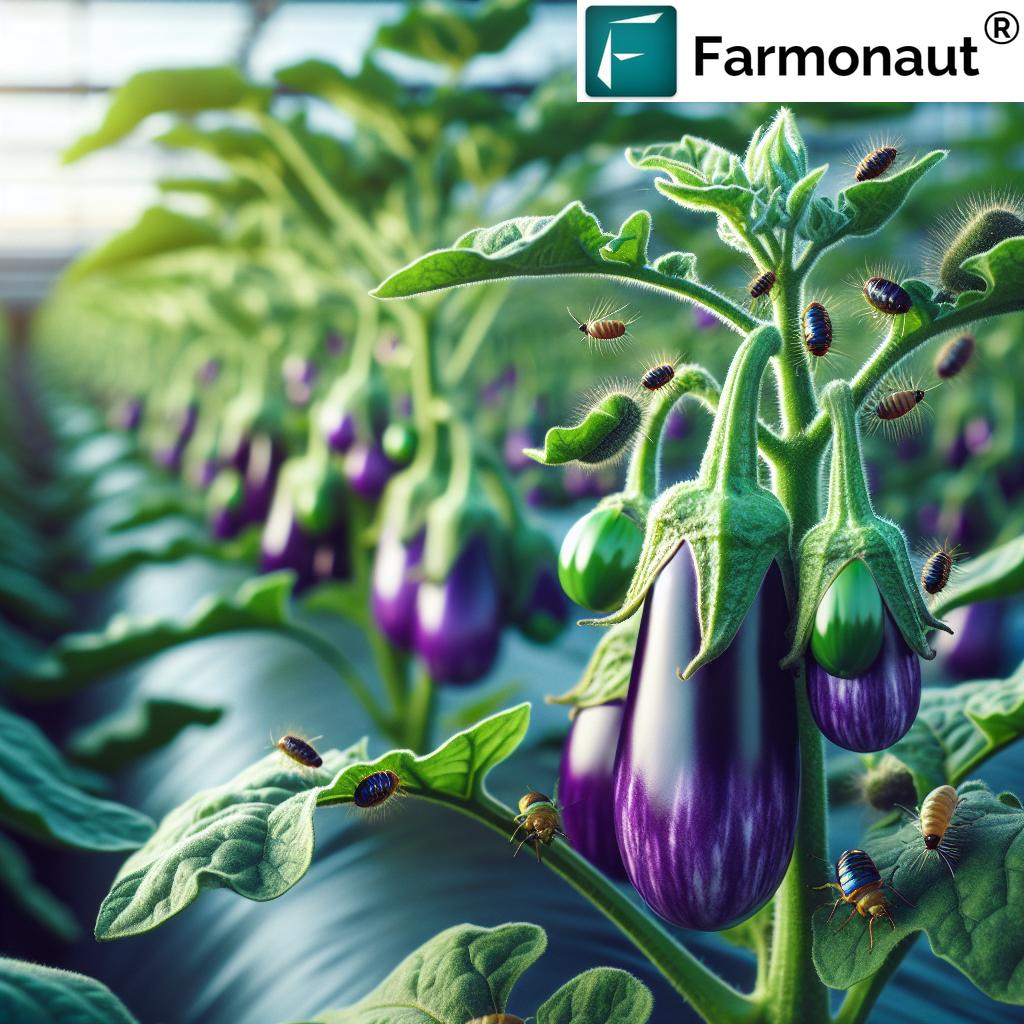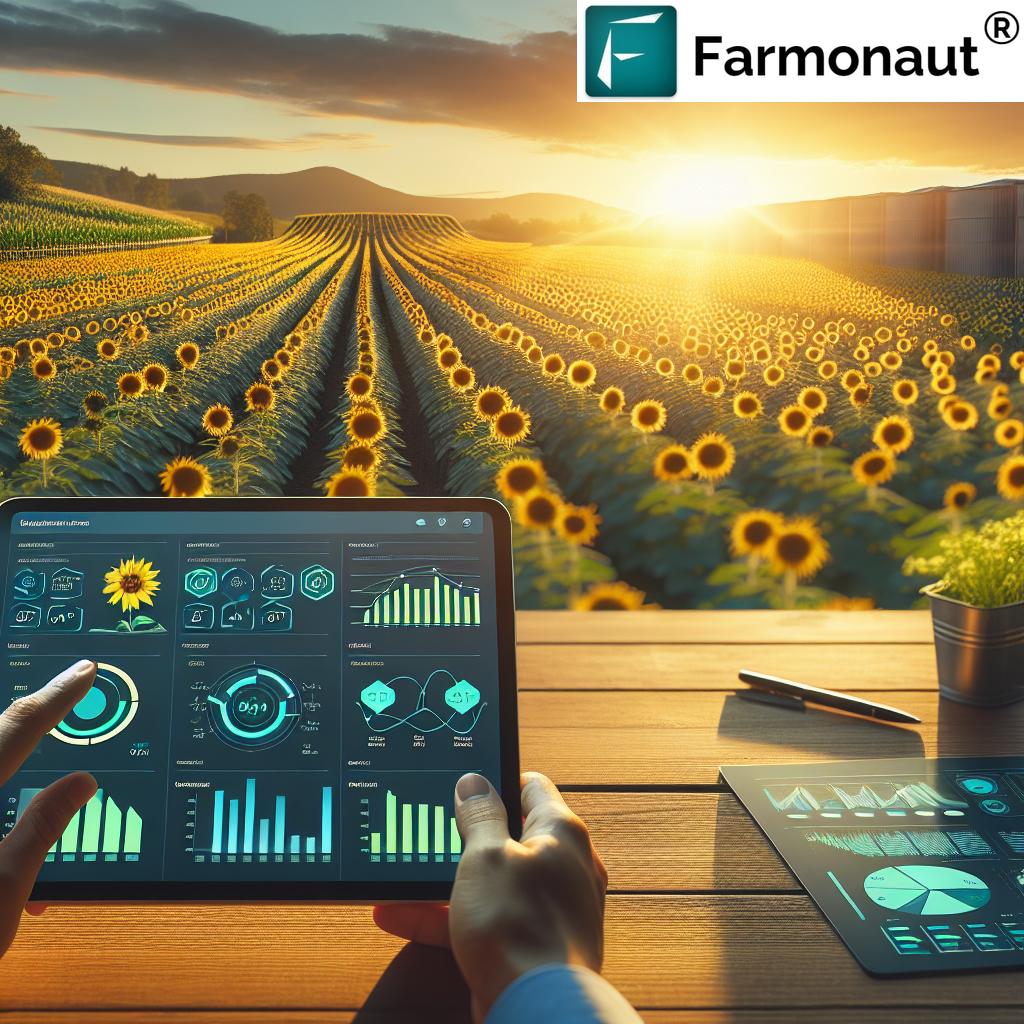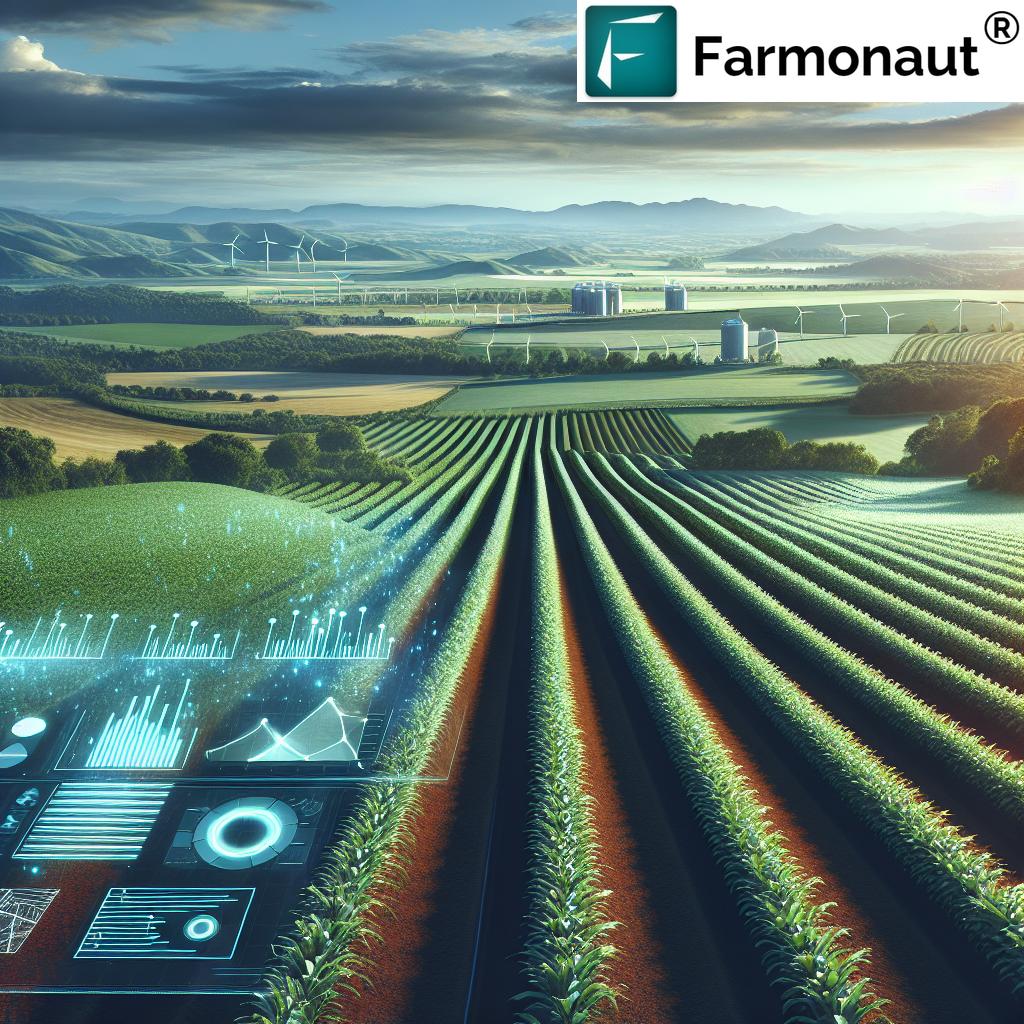Bismarck Palm, Bisman Harvest Equipment: 7 Key Tips for Sustainable Agroforestry in 2026
Meta Description: Bismarck Palm, Bisman Harvest Equipment: Explore 7 key tips on how Bismarck palm and advanced Bisman harvest equipment are transforming sustainable agroforestry and plantation management, driving greater efficiency and eco-friendly practices in 2026.
Table of Contents
- Did You Know?
- Introduction
- Bismarck Palm: A Striking and Sustainable Species
- Bisman Harvest Equipment: Advancements for Modern Plantations
- 7 Key Tips: Synergizing Bismarck Palm & Bisman Harvest Equipment in 2026
- Comparative Benefits Table
- Farmonaut: Driving Data-Driven Agricultural Sustainability
- Future-Proofing Agroforestry: Challenges and Recommendations
- Conclusion
- Frequently Asked Questions (FAQ)
Introduction: Synergy Between Bismarck Palm and Bisman Harvest Equipment
In the ever-evolving landscape of agroforestry and plantation management, the interplay between robust plant species and innovative harvest technology is shaping the future of sustainable agriculture. The Bismarck palm (Bismarckia nobilis), a native marvel of Madagascar, is emerging as a valuable and eco-friendly asset for plantations across tropical and subtropical regions. Simultaneously, advances in agricultural machinery, exemplified by Bisman harvest equipment, are transforming core operations, driving remarkable gains in efficiency, safety, and sustainability as we move into 2026 and beyond.
This comprehensive article explores the integration of the Bismarck palm with Bisman harvest equipment in various agroforestry contexts, providing practical insights, data-driven analysis, and actionable tips for businesses and rural communities striving to achieve higher productivity alongside ecological stewardship.
The Bismarck Palm: A Striking, Sustainable Species for Agroforestry
The Bismarck palm (Bismarckia nobilis) stands out as one of the most visually captivating and robust palm species renowned for its stature, large silvery-blue leaves, and adaptability to diverse climatic conditions. With origins in Madagascar, this striking palm has rapidly gained attention across sectors ranging from forestry to urban landscaping.
Key Attributes of Bismarck Palm
- Native and Adaptive: Thrives in tropical and subtropical zones worldwide, tolerating drought, poor soils, and coastal salty air.
- Resilience: Quickly adapts to challenging regions where conventional crops may falter, broadening usability.
- Aesthetic Appeal: Large, fan-shaped leaves and attractive form fuel demand for ornamental horticulture and landscaping projects.
- Environmental Benefits: Valuable for carbon sequestration, soil stabilization, and enhancing biodiversity, making it an eco-friendly option for modern plantations.
- Economic Potential: Periodic harvesting of leaves (without compromising palm health) creates additional income streams for rural communities.
Thanks to its adaptability and resilient nature, the Bismarck palm is increasingly seen not just as an ornamental treasure but as a practical, scalable, and valuable resource for sustainable agroforestry initiatives.
Environmental & Economic Advantages of Cultivating Bismarck Palm
- Carbon Sequestration: The palm’s massive fronds and longevity make it an excellent carbon sink, mitigating greenhouse gas emissions from plantation operations.
- Soil Enrichment: Deep root systems improve soil structure, while leaf litter and periodic leaf harvested material boost organic content.
- Biodiversity: Plantations can serve as refuges for native flora and fauna, promoting biodiversity enhancement alongside production goals.
- Income Diversification: Leaves are regularly harvested for thatching, weaving, and crafting, supporting economic resilience for farming communities.
- Resilient Crops: Suitable for regions with drought, salty soils, or otherwise challenging growing conditions, expanding viable cultivation zones.
Why the Bismarck Palm Is the Future of Plantation Agroforestry
As planet-friendly agricultural practices become standard in 2026, the Bismarck palm is uniquely positioned for scaling in both new and established plantations. Its robust growth, ease of integration, and myriad environmental and economic benefits are making it an increasingly attractive investment for commercial operations, rural smallholders, and municipal landscaping projects alike.
Bisman Harvest Equipment: Modern Solutions for Palm Plantations
The next pivot in sustainable plantation management is powerful machinery that brings speed, precision, and safety to the often labor-intensive world of palm harvesting. Bisman harvest equipment—as unveiled in the newest 2025 lineup—delivers a suite of innovative tools precisely tailored for palms, including the Bismarck palm.
Key Innovations in Bisman Harvest Equipment (2025+)
- Motorized Harvesters: Streamlined collection of leaves and fruit with minimal plant disturbance and higher efficiency.
- Precision Cutters: Selective cutting devices designed for optimized performance on robust, large-leafed palms.
- Ground-Based Machinery: Supports worker safety by reducing or eliminating climbing needs for leaf collection and maintenance.
- Specialized Attachments: Tailored for both young and mature plantations, enabling flexibility for plantations of varying sizes and palm ages.
- Low-Impact Tires and Controls: Prevents soil compaction and supports sustainable operations.
By integrating smart harvest equipment into plantation routines, operators are achieving significant improvements in both operational throughput and ecological impact. The focus on precision, reducing manual labor, and minimal disruption to growth cycles highlights a fundamental shift toward responsible, data-driven, and sustainable plantation management as we move into 2026.
The Revolution in Palm Plantation Operations
- Efficiency: Harvest rates surpass previous manual benchmarks, enabling higher throughput for expanding commercial plantations.
- Sustainability: By reducing physical impact on both plants and soils, modern equipment enables prolonged production cycles and healthier ecosystems.
- Worker Safety: Reduces or eliminates risky climbing and use of sharp, handheld tools, aligning with new safety standards.
- Cost Effectiveness: While initial investment is significant, labor costs and missed production opportunities are greatly diminished over time.
7 Key Tips: Successful Integration of Bismarck Palm & Bisman Harvest Equipment in 2026
The intersection of Bismarck palm cultivation and Bisman harvest equipment is more than just modernizing tradition—it’s about constructing resilient, efficient, and environmentally sustainable agroforestry systems. Here are seven essential insights to guide plantation managers, agribusinesses, and rural entrepreneurs toward thriving, future-ready palm operations:
1. Optimize Plantation Design for Bismarck Palm and Bisman Equipment Use
Effective plantation planning involves more than just selecting a species—it requires strategic layout to accommodate machinery, facilitate efficient harvesting, and optimize palm health. Spacing palms in linear or grid patterns enhances sunlight capture, air flow, and allows easy access for Bisman harvesters and cutters, maximizing both yield and operational safety.
- Maintain appropriate row widths for machinery movement
- Group palms by age or size for streamlined, efficient maintenance and harvesting cycles
- Incorporate paths and turning areas for equipment to prevent soil compaction
2. Prioritize Sustainability: Leverage Carbon-Focused Plantation Management
Bismarck palms’ carbon sequestration capacity is a critical sustainability driver. Businesses can benefit not only from healthier ecosystems, but also from measuring and managing carbon footprints—an increasingly important metric for grants, certifications, and regulatory compliance in 2026.
- Utilize satellite-based monitoring and precision advisory solutions from Farmonaut Carbon Footprinting for in-depth carbon tracking.
- Regularly assess palm growth and organic carbon levels to maximize sustainability of plantation operations.
3. Invest in Precision Harvesting Tools and Technologies
Outdated harvesting methods are laborious and may compromise plant health. Bisman harvest equipment brings precision and consistency to leaf collection, dramatically reducing manual labor while supporting faster production cycles. Augment this with digital agricultural management, such as large-scale farm management tools for seamless tracking and reporting.
- Deploy ground-based or motorized harvesters to minimize worker risk and production downtime.
- Implement maintenance checklists for equipment longevity.
4. Schedule Regular Maintenance to Ensure Operational Reliability
Efficient plantations depend on functioning equipment. A preventive maintenance schedule for Bisman machinery ensures uninterrupted workflow during critical harvesting periods and boosts overall lifespan of plantation assets.
- Monitor usage hours and schedule annual or seasonal checks as advised by manufacturer guidelines.
- Train local staff in basic mechanical skills to reduce servicing delays in rural regions.
5. Incorporate Smart Monitoring and Adaptive Management
Leverage Farmonaut’s satellite-based real-time monitoring and AI-powered analytics to gain insights on crop health, irrigation, and resource management. These data streams inform strategic decision-making, helping identify inefficiencies or health issues before they escalate.
- Track leaf production, harvest yields, and soil conditions for continuous improvement.
- Receive automated alerts for abnormal changes, enabling timely action.
6. Integrate Data-Driven Advisory and Traceability Systems
Increasingly, traceability is a market requirement. Use blockchain-enabled traceability to track product lifecycles from field to market, supporting consumer confidence and opening new revenue streams. AI-driven advisory systems can further optimize your agroforestry approach by recommending best-fit management practices for local (Madagascar) or global contexts.
- Implement digital labeling & record keeping for all harvests.
- Leverage advisory suggestions for pest management, crop rotation, and labor optimization.
7. Focus on Capacity Building and Rural Community Engagement
Ultimately, the success of plantations depends on people—operators, workers, and local stakeholders. Conduct regular training in safe equipment use, technological adoption, and sustainable management techniques. By investing in local capacity, managers ensure the long-term efficiency, safety, and prosperity of their palm plantations.
- Partner with local institutions for skill-building sessions.
- Promote responsible, inclusive work environments.
Comparative Benefits Table: Bismarck Palm vs. Bisman Harvest Equipment in Sustainable Agroforestry
| Parameter | Bismarck Palm (Estimated Values) | Bisman Harvest Equipment (Estimated Values) | Sustainability Impact |
|---|---|---|---|
| Water Usage (liters/month) | 180–250 (drought-tolerant) |
N/A (minimal for maintenance) | Low water demand supports sustainability in arid climates |
| Yield Efficiency (% improvement) | +12% (with improved management) | +25–30% | Combined, can increase overall plantation output by ~40% |
| Maintenance Frequency (times/year) | 3–4 (leaf pruning, pest check) | 2–3 (equipment service) | Reduced overall maintenance time decreases labor strain |
| Carbon Sequestration Rate (kg CO₂/year) | ~35–60 per mature palm | N/A (indirect—enables longer productive life for palms) | Promotes climate-smart agriculture & carbon markets |
| Labor Requirement (hours/acre) | 32–40 (manual) | 8–14 (with equipment) | Drastic reduction in manual labor boosts efficiency & safety |
| Initial Investment Cost (USD) | $350–$700 per palm (nursery + planting) | $5,000–$12,000 (per mid-sized harvester unit) | Investment recovered through labor savings & higher yields |
| Ecological Benefits | Soil stabilization, biodiversity boost, pollinator habitat | Lower fuel use, reduced soil compaction, safety for wildlife | Strengthens ecosystem health while meeting production goals |
Farmonaut: Driving Data-Driven, Efficient & Sustainable Plantation Innovation
For plantation owners, managers, and agribusinesses seeking a definitive edge in sustainability, scalability, and transparency, Farmonaut offers a comprehensive satellite-driven platform optimized for modern agriculture and forestry. Our goal is to make science-based, affordable, and accessible crop and resource monitoring central to every operation—supporting the very essence of resilient, future-ready agroforestry.
How Farmonaut Technology Supports Sustainable Plantation Management
- Remote Satellite Monitoring: Accurate tracking of palm health, growth dynamics, and environmental variables using advanced multispectral imagery and NDVI analysis.
- Jeevn AI Advisory: Real-time decision support for harvest scheduling, input optimization, and resource management—customized for palm plantations.
- Blockchain Traceability: Guaranteed transparency from plantation to market via robust, tamper-proof product traceability systems. Learn more about Farmonaut’s traceability solutions.
- Environmental Impact Monitoring: Detailed, actionable insights on carbon output and sustainability performance—key for meeting ESG requirements and participating in climate-smart carbon markets.
By equipping plantation managers and rural communities with real-time, scalable, and actionable data, Farmonaut empowers not only profitable production, but also stewardship of ecological resources.
Use Cases for Sustainable Palm Management
- The Farmonaut Agro Admin app supports large-scale farm management, helping operators oversee diverse palm plantations across vast areas using a single system.
- Fleet and Resource Management: Coordinate Bisman equipment fleets for maximum uptime, cost reduction, and safety compliance.
- Crop Plantation & Forest Advisory: Use real-time advisory to select optimal planting dates, reduce post-harvest losses, and ensure adaptive responses to climatic shifts.
- Insurance and Finance: Get satellite-verified evidence for crop insurance and loans, streamlining financing for new palm expansion.
Discover the full potential and technical capabilities of Farmonaut API on our API product page and detailed developer documentation.
Future-Proofing Agroforestry: Challenges and Recommendations for 2026+
As sustainability, carbon markets, and digital compliance become standard pillars of agricultural plantations, forward-thinking approaches are needed to maximize resiliency in Bismarck palm-driven systems. However, integrating advanced machinery and data technology into palm-based agroforestry is not without challenges.
Key Challenges for Palm Plantations and Modern Harvest Equipment
- Accessibility of Equipment for Smallholders: Initial investment for Bisman harvesters is high. Creative financing, leasing, or cooperatives can help rural farmers gain access.
- Training & Skill Development: Effective use of machinery and precision agriculture tools requires sustained educational outreach, especially in emerging and rural markets.
- Maintaining Genetic Diversity: To avoid monoculture risks, encourage diverse palm genetics within plantations, ensuring long-term ecosystem health and market stability.
- Infrastructure Limitations: Transport and maintenance services for machinery must be reliable and locally available to reduce downtime and losses.
- Data-Driven Decision Making: Achieving the full benefits of smart apps and satellite insights takes time—adoption grows alongside digital literacy at the community level.
Our Recommendations for a Resilient, Sustainable Future
- Foster inclusive education and demonstration farms to showcase the advantages and operation of Bisman equipment and Bismarck palms.
- Promote public-private partnerships for rural infrastructure upgrades, making replacement parts and technical support widely accessible.
- Ensure subsidized access to digital monitoring and carbon-tracking solutions for small and medium plantations, increasing participation in sustainability certification programs.
- Advocate adaptive management planning—using both historic records and predictive, AI-driven analytics from platforms like Farmonaut—to build resilience against climate volatility in 2026 and beyond.
Conclusion: The Future of Sustainable Palm Agroforestry Starts Today
The synergistic integration of the Bismarck palm, a striking and robust species, with Bisman harvest equipment is revolutionizing plantation management and sustainable agroforestry as we move into 2026 and beyond. This approach leverages nature’s resilience and advanced technology, creating eco-friendly, high-output palm systems well-suited to meet evolving environmental and market demands.
By embedding data-driven insights, precision harvesting, and carbon-focused practices into every facet of operations, agribusinesses and rural innovators—not to mention municipal planners and policy makers—are driving a new era of production that balances profitability with planet-centric stewardship.
Discover a smarter, more sustainable future for palm-based plantations with Farmonaut’s satellite-driven monitoring, AI advisory, and resource management—delivering the actionable intelligence needed to thrive in an interconnected, climate-conscious era.
Frequently Asked Questions (FAQ)
What is the Bismarck palm and why is it valuable for sustainable agroforestry?
The Bismarck palm (Bismarckia nobilis) is a large, drought-tolerant species native to Madagascar, celebrated for its resilience, fast growth, and striking foliage. It enhances soil structure, sequesters carbon, supports biodiversity, and provides economic benefits through periodic leaf harvesting—making it a top choice for sustainable plantation management in 2026.
How does Bisman harvest equipment boost plantation efficiency and safety?
Bisman harvest equipment automates and streamlines the collection of palm leaves and fruit, reducing manual labor and the risks associated with climbing and sharp tools. With precision-built machinery, operational efficiency increases by up to 30%, while safety and plant health are significantly enhanced.
Can Bismarck palm plantations participate in carbon markets?
Yes! Due to their high carbon sequestration rate, Bismarck palm plantations can track and monetize their environmental impact via Farmonaut’s carbon footprinting services, supporting climate-smart certification and opening access to carbon markets and sustainability grants.
How can Farmonaut support modern palm plantations?
Farmonaut delivers satellite-enabled real-time plantation monitoring, AI-powered advisory, blockchain-based traceability, and environmental impact reporting. These services optimize palm health, production, and compliance, aiding both smallholders and commercial operators in building sustainable, efficient, and future-proof operations.
What is the role of training and community engagement in plantation success?
Well-trained staff are critical for safe, efficient equipment use and sustainable plantation practices. Ongoing education and rural community inclusion drive technological adoption, reduce errors, and ensure the long-term ecological and economic health of palm-based agroforestry systems.
Where can I access Farmonaut solutions for my plantation?
Download Farmonaut’s app for Android or iOS, or access our web platform for satellite-based field monitoring, resource management, and advisory tools. Explore our Crop Plantation & Forest Advisory solutions today.
Ready to transform your plantation? Learn more about Farmonaut API and integrate seamless agroforestry insights into your tech stack for 2026 and beyond.












